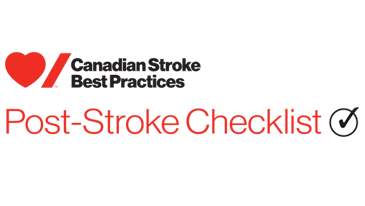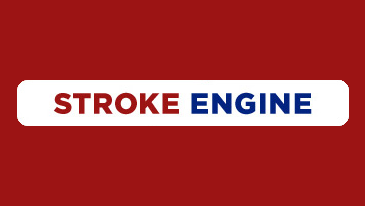For the CSBPR 7th edition update, vascular cognitive impairment (VCI) has become a separate module with a primary focus on VCI that results from any of several vascular conditions, such as stroke. This redesigned and expanded module provides guidance across the continuum of care for individuals experiencing VCI including awareness of signs and symptoms, screening, assessment, diagnosis, pharmacological and non-pharmacological management, secondary prevention of VCI, active rehabilitation and end-of-life planning and care. This module also addresses VCI considerations when the VCI is caused by other underlying vascular conditions such as heart failure and hypertension.
The goal is to build on the previous version of these recommendations, and on the work of other high-quality sources, such as the Canadian Consensus Conference on Diagnosis and Treatment of Dementia (CCCDTD)5: Guidelines for management of vascular cognitive impairment, to provide clear guidance for a range of healthcare teams and providers across the full continuum of care, working in collaboration when possible.
In Scope: This module will focus on assessment, diagnosis and management of vascular cognitive impairment and it is targeting individuals who are already exhibiting VCI signs and symptoms. This will include individuals who present with VCI without overt stroke, those with VCI who have experienced a stroke, or those with VCI secondary to other significant vascular medical conditions (e.g., heart failure, hypertension, atrial fibrillation, cardiac arrest, diabetes, renal failure or other vascular compromise) with or without neurodegenerative disease. Refer to Figure 1 Heart & Stroke Heart-Brain Associations Map.
Out of scope: Primary prevention of vascular disease, which may include VCI, stroke, heart disease and other vascular related conditions, will be generally considered out of scope for this module. We recognize the critical importance of primary prevention and strongly promote it and will direct readers to the high-quality primary prevention of vascular disease guidelines that are currently available for guidance (Arnett et al. 2019; Jain et al. 2022; Visseren et al. 2022). We work collaboratively with other health sectors (e.g., Public Health Agency of Canada) and health professional organizations (such as the Canadian Consortium on Neurodegeneration in Aging, Canadian Cardiovascular Society, Hypertension Canada) who produce evidence-based guidance on primary prevention. Therefore, we will defer to those organizations and guidelines for broad primary prevention recommendations. Likewise, this guideline will not address management of the underlying conditions (e.g., heart failure, hypertension, Alzheimer’s Disease) that may contribute to vascular cognitive decline, and we defer to individual focused guidelines on these areas for relevant recommendations. Individuals presenting with motor, physical, visual, sensory, and/or communication problems without a cognitive component are out of scope, and their needs are addressed in the Stroke Rehabilitation and Recovery module (Teasell et al. 2020).
Note: The term stroke in these recommendations refers to all types including ischemic, hemorrhagic (SAH and ICH), and cerebral venous thrombosis. If transient ischemic attack is included, it will be stated separately.
Lived Experience of VCI – Integrating their Journey into Clinical Guidelines
Vascular cognitive impairment (VCI) is a devastating condition that is both a risk factor for and a consequence of stroke. The experiences of individuals with VCI and their caregivers across the continuum of care are not well defined. To ensure these VCI best practice recommendations reflect and consider the lived experience of individuals with VCI and their families, a VCI Journey Map was created to capture the lived experiences and critical needs from symptom onset to pre-diagnosis, to diagnosis, to management and living with VCI. This journey map complements the recommendations and ensures a person- and family-centred approach to care. Refer to Appendix Five for the Heart & Stroke Vascular Cognitive Impairment Journey Map. (Swartz et al., 2025)
Five distinct stages of a VCI journey were identified through a collaborative process working with our Community Consultation and Review Panel (CCRP) and our scientific writing group: symptom onset, pre-diagnosis, diagnosis, management, and living with VCI. Themes included symptoms, navigating care, managing daily activities, emotions and mental health, and relationship to self and others. Unique elements were identified and plotted along the Map. The key findings that emerged from this process are:
- that there are significant knowledge gaps regarding the individual with VCI and caregiver experience of VCI
- People with lived experience (PWLE) and caregivers identify distinct needs throughout the VCI journey
- the Journey Map can inform planning and provide support to facilitate self-management and system navigation for PWLE and caregivers and foster person-centred care among healthcare professionals.
- Further investigation of PWLE/caregiver needs, and strategies to support identified needs are required.
The detailed methodology and explanations for each of these steps in the development and dissemination of the CSBPR is available in the Canadian Stroke Best Practice Recommendations Overview and Methodology manual available on the Canadian stroke best practices website at https://www.strokebestpractices.ca/recommendations/overview-methods-and-knowledge-exchange.
Conflicts of interest
All potential participants in the recommendation development and review process are required to complete confidentiality agreements and declare all actual and potential conflicts of interest prior to participation. Declared conflicts of interest are reviewed by the co-chairs of the CSBPR Advisory Committee and Heart & Stroke staff to assess the potential impact. Those with significant conflicts with respect to the module topic are not selected for writing group or reviewer roles.
Participants who have conflicts for a particular topic area are identified at the beginning of discussions for that topic and are recused from voting. If a co-chair is in conflict, they are recused from their responsibilities for that discussion and another non-conflicted participant assumes the role for that discussion and vote. Heart & Stroke senior staff members participate in all writing group discussions and intervene if they perceive an untoward bias by a writing group member.
Conflict of interest declarations for the Vascular Cognitive Impairment module writing group members can be found in Appendix One, and external reviewers in Appendix Two.
Heart & Stroke gratefully acknowledges the Vascular Cognitive Impairment writing group leaders and members, all of whom have volunteered their time and expertise to update these recommendations. Members of the Canadian Stroke Consortium were involved in all aspects of the development of these recommendations. The recommendations underwent external review by Joy Boyce, Nada El Husseini, Mary Lou Halabi, Sara Hayes, Raed Joundi, Elise Lamy, Anik Laneville, Haakon Nygaard, Terrance Quinn, Jennifer Rabin, Angela Roberts, Paolo Vitali.
We thank the Canadian Stroke Best Practices and Quality Advisory Committee members: Eric E. Smith (Co-Chair), Anita Mountain (Co-Chair), Gord Gubitz, Dar Dowlatshahi, Dylan Blacquiere, Margie Burns, Thalia S. Field, Farrell Leibovitch, Erin MacHattie, Christine Papoushek, Jeffrey Habert, Joyce Fung, Michael D Hill, Eddy Lang, Pascale Lavoie, Beth Linkewich, Colleen O’Connell, Jai Shankar, Debbie Timpson, Theodore Wein, and Katie White. The performance measures were reviewed and updated by members of the Heart & Stroke health systems quality council including Amy Yu (Chair), Aravind Ganesh, Sacha Arsenault, and Shannon MacDonald.
We acknowledge and thank Norine Foley and the evidence analysis team at workHORSE Consulting Group; Alison Zorzit and Maggie McDougall for their contributions to the VCI Journey map; Laurie Charest of Heart & Stroke for her coordination of the CSBPR teams and processes, Research Coordinator Meghan Papoushek, and the Heart & Stroke internal teams who contributed to the development and publication of these recommendations (Translation (Francine Forget Marin), Communications, Knowledge Translation, Engagement, Health Systems, Health Policy, and Digital Solutions).
Heart & Stroke is especially grateful to the members of the Community Consultation and Review Panel who reviewed this module and shared their personal experiences and insights on what made or could have made their journey easier. CCRP members included Angie Collins-Burke, George Curran, Hannah Foulger, Lara Kaufman, Jim Nicol, Alisha Thaver, Julie Tomaino, Debbie Wyatt, Fatima Quraishi (writing group liaison), and additional members (prefers names remain confidential).
Richard H Swartz (Co-Chair), R Stewart Longman (Co-Chair), M. Patrice Lindsay (Corresponding Author), Rebecca Lund, Melissa Austin, Lauren E. Bechard, Jaspreet Bhangu, Venera C. Bruto, Sherri Carter, Nelly Chow, Yan Deschaintre, Gail A Eskes, Kathleen Fedorchuk, Lesley Fellows, Norine Foley, Lee-Anne Greer, Aravind Ganesh, Douglas S Lee, Carol Leonard, Ronak Patel, Sepideh Poonyania, Valerie Poulin, Fatima Quraishi, Pamela Roach, Tricia Shoniker, Carmen Tuchak, Anita Mountain (Senior Advisor), Chelsy Martin and Eric E Smith (Senior Advisor); on behalf of the Canadian Stroke Best Practice Recommendations Advisory Committee, in collaboration with the Canadian Stroke Consortium, Canadian Neurological Sciences Federation, and CanStroke Recovery Clinical Trials Platform. Canadian Stroke Best Practice Recommendations: Vascular Cognitive Impairment, 7th Edition, 2024; Toronto, Ontario, Canada: Heart and Stroke Foundation.
- Vascular Cognitive Impairment guideline publication
- Writing Group Members and External Reviewers (Appendices One & Two)
- Vascular Cognitive Impairment Definitions and Descriptions
- Framework for Assessing and Diagnosing Vascular Cognitive Impairment
- Figure 1: Heart & Stroke heart-brain associations map—All cardiovascular conditions can lead to vascular cognitive impairment
- Figure 2: Framework for assessing and diagnosing vascular cognitive impairment
- Figure 3: Multiple clinical presentations can lead to Vascular Cognitive Impairment, with the main components of clinical pathways covered in these recommendations
1.0 Screening, Assessment and Diagnosis
2.0 Management of Vascular Cognitive Impairment
- Box 2A: Examples of Activities of Daily Living impacted by Cognitive changes
- Vascular Cognitive Impairment Evidence Table and Reference List 2
3.0 Cognitive Rehabilitation
4.0 Support for Individuals with VCI, Their Families and Caregivers
5.0 Palliative and End-of-Life Care
Appendix One: Vascular Cognitive Impairment Writing Group 2024
Appendix Two: Vascular Cognitive Impairment External Reviewers 2024
Appendix Three: Signs and Symptoms of Vascular Cognitive Impairment
Appendix Five: The Lived Experience of Vascular Cognitive Impairment Journey Map





